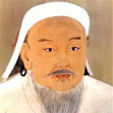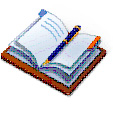Lesson Three: Open Ended Questions
In this lesson we examine the basics of constructing open ended questions. These are questions that use words like who, what, when, where, and why. Just like in the previous lesson, these kinds of questions in Mongolian require special question particles. In this lesson we'll focus on using the question words "юу" and "хэн".
The following video provides an introduction to the question particles and words and their basic usages.
Creating open ended questions builds off the same basic rules as creating yes/no type questions. Take a statement, replace the subject or object word with a question word, and add one of the question particles, and you have created an open ended question. Unlike the yes/no type questions, the choice of which question particle to use is not determined by vowel harmony. Instead it is determined by the last letter of the word preceding the particle. It is easy to understand why by trying to say "юм вэ" and "юм бэ". Notice that saying "юм вэ" is hard and you probably are saying something closer to "юм бэ" anyway. For the time being, though, it is helpful to remember that "бэ" only follows words that end in "в", "н", "л", and "м".
Try the following exercises to practice using the particles and creating questions.
A common greeting with several variants uses the word "юу". The following video introduces this important greeting. You may notice the questions do not end in the question particle "вэ". Technically they should, but in colloquial speech people sometimes drop the open ended question particles or even pronounce them in unexpected ways. For now, you should train yourself to always use the question particles when constructing open ended questions. However, if you encounter examples in which people sometimes do not use the particles, then you should also get comfortable with that form as well. In this case with these greetings you should feel free not to add "вэ" when asking the questions.
You may have noticed if you listened carefully to the video above that "байна" is often pronounced like "вайна" when it is preceded by "юу". This is very common, and you may find yourself doing the same thing over time because it is just a bit easier to say "юу вайна" rather than "юу байна". Of course, even though it is pronounced with a "в" like sound in this situation, you should still spell the word "байна".
To recap, creating open ended questions in Mongolian follows a similar pattern to creating yes/no type questions but with their own specialized question particles. Although there are many question words in Mongolian, in this lesson we focused on using "юу" and "хэн". Using the information in this lesson, you are now able to ask what and who things are.





